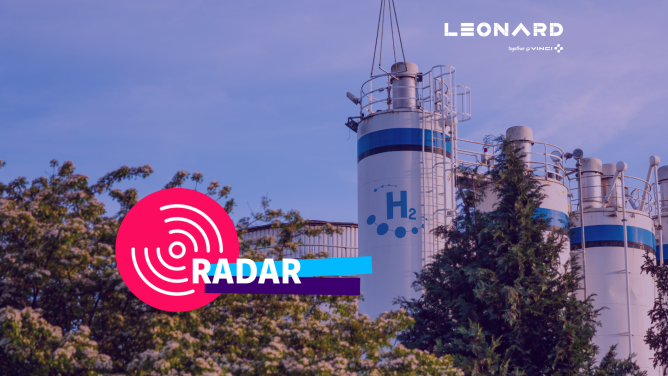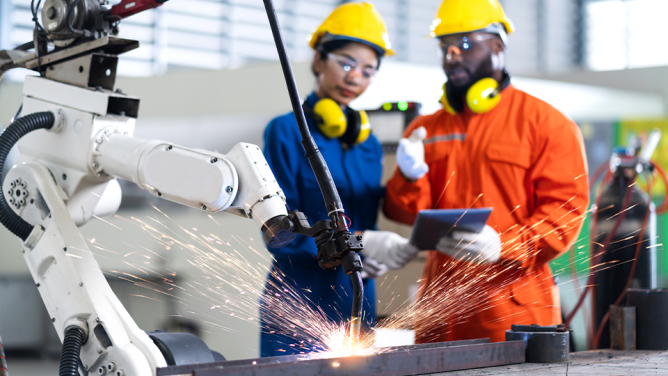Meeting electricity demand
Repowering is a rather intuitive practice. It’s about replacing outdated energy infrastructure with more efficient, modernized alternatives. Not only is it a much quicker way to increase energy production without having to build new infrastructure, but it’s more efficient too. This approach also meets many of today’s major challenges too, enabling us to adapt rapidly to an exponential growth in electricity demand. As we progressively shift away from fossil fuels, as well as a result of the war in Ukraine, the IEA estimates that electricity will represent 50% of the total energy mix in 2050, compared to 20% today. Repowering is part of an effort for greater energy efficiency, while infrastructure are increasingly aging. It is estimated that 70% of the US electricity grid is more than 25 years old, while a third of Asia’s hydropower capacity is more than 40 years old.
Enhancing technological breakthroughs
In the renewable energy sector, repowering is particularly interesting because it is taking advantage of technological breakthroughs made in recent years. In the wind power sector, wind turbines have doubled in size in less than 20 years, with power capacity also growing from 0.2MW in the 1990s to 3MW today. Solar power cell innovations have seen the 30% energy efficiency threshold being regularly crossed and show very rapid progress regardless of what technology is used.
Protecting land
Renewable energy infrastructure does take up land. McKinsey estimates that between 23,000 and 35,000 square kilometers of land (an area equivalent to the size of Belgium) would be required in order for Europe to meet its planned renewable energy capacity targets. The challenge is all the greater as not all land is suitable for solar or wind power solutions, and there is strong competition with other land uses (such as agriculture and conservation areas). In this context, repowering is seen as an obvious ally to France’s net-zero soil artificialization objectives, avoiding the need to build new power plants.
Accelerate the trend and reduce costs
Repowering also offers an opportunity to deploy major energy projects, but faster. To follow in this direction, the European Union is in the process of changing its legal framework, which currently remains one of the major setbacks. While the situations vary between countries, the administrative procedures governing repowering (permits, environmental impact assessments) are largely similar to those concerning “new” builds. Europe’s REPowerEU plan aims to resolve the situation, by introducing faster permit-granting processes limited to six months for installations with an electrical capacity of less than 150 kW, and no longer than one year for offshore wind energy projects. In terms of cost, the weight of dismantling operations must be taken into consideration with the potential gains. By replacing obsolete infrastructure, maintenance costs can be dramatically reduced for aging infrastructure. And what’s even more important, by developing a sector for dismantling and recycling solar panels and wind turbines could bring substantial gains. Sia Partners gives the example of a 3MW Nordex wind turbine, which costs an estimated €150,000 to dismantle. However, this figure falls to around €50,000 when dismantled parts are recycled. However, the overall lifecycle analysis between extending existing infrastructures or replacing them requires additional data.
Beyond wind power
These days, repowering is mostly applied in the wind power sector. It is particularly suited to a wind turbine’s relatively short life cycle, which is approximately 20 years. According to WindEurope, 20GW of onshore wind farms will need to be repowered over the next ten years. Yet repowering goes well beyond the wind power sector, impacting all energy sources – especially hydropower. While many countries have already reached their maximum hydropower potential, more recent technology solutions could help provide substantial production gains. Take the Romanche-Gavet hydropower plant in France, which has increased its renewable energy production by 40% where its located along a section of the river thanks to repowering. Not only are there production gains, but repowering operations in the hydropower sector are also delivering environmental benefits. In the Romanche Valley, EDF has recovered and restored several hectares of land and one hectare of water. Meanwhile another great example can be seen in Italy at the Capodacqua hydropower plant, which has integrated fish ladders and installed turbines and valves that do not need oil, as well as a more precise water regulation system to improve water use and avoid waste.
Despite the promises, the practice of repowering remains marginal today. It is estimated that less than 10% of wind turbines at the end of their life are replaced… While the technologies are available, the main issue – worldwide – is the complex economic trade-off between dismantling, repowering or continuing the existing plant, depending on a number of parameters (energy prices, interest rates, public support or not).



